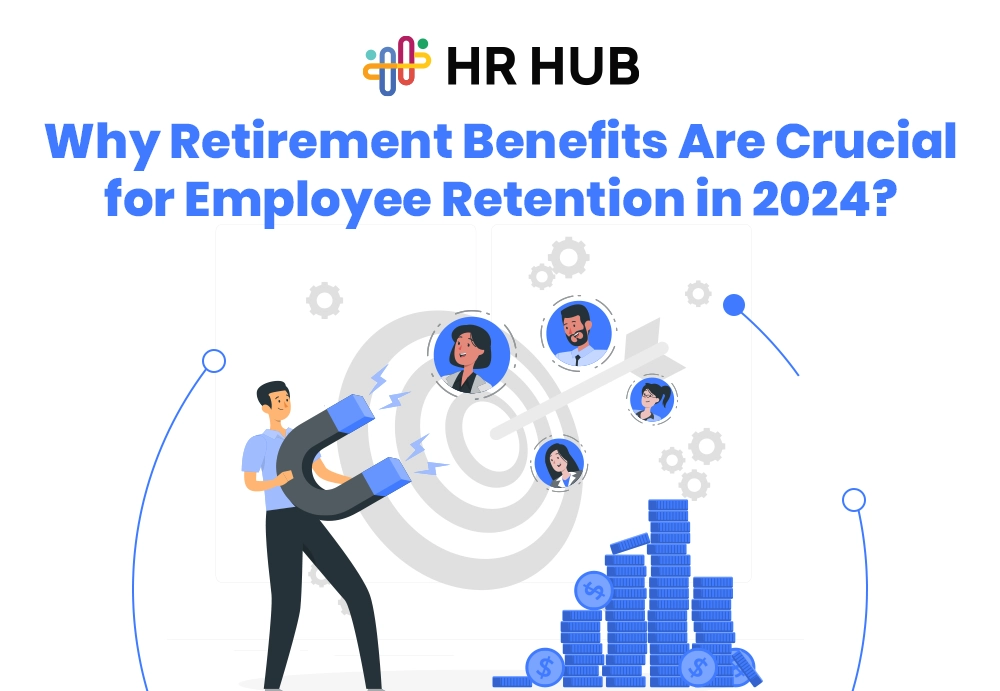Maternity and Paternity Leave in India: Policy, Importance, and Benefits
- Work Culture & Experience


Retaining top talent is more critical than ever in today's competitive job market. For organizations looking to be at the forefront, employee retention has become a priority because of an approach meant to show loyalty and as an instrument for cost-cutting.
The loss of experienced staff results in high recruitment expenses, lost organization knowledge, and team dynamics upheaval. Many organizations reward their employees with more traditional benefits, such as flexible work, remote work, and professional and personal development opportunities, but retirement benefits are overlooked.
This blog discovers how complete retirement benefits can be a cornerstone for smart employee retention strategies in 2024.
The modern workforce is changing. Competitive salaries do not motivate today's employees enough; they seek comprehensive reward packages that ensure their future. Retirement benefits that once were a norm are now integral to an organization's employee retention strategy.
Employees appreciate organizations that plan their long-term future. Recently, 78 percent of respondents in a survey reported that they would stay in a company for much longer if it designed excellent retirement plans. This percentage shows that retirement planning is imperative to integrate into businesses' talent retention strategies.
The retirement benefits are not perks but investments in the workforce's future and well-being. Let's proceed to deepen the following reasons why these retirement benefits have gigantic value in strategies concerning employee retention:
As employees in an organization approach retirement, they fear the future. However, retirement schemes such as pensions, 401(k) matches, and savings accounts offer them security for their entire lifetime. This reduces job dissatisfaction and increases organizational loyalty, allowing employees to stay longer.
A mere salary is not enough to attract top talent in competitive industries. Retirement packages offered by the employer become a deciding factor for the prospective employees. Companies offering good retirement benefits attract skilled candidates and retain them by giving them trust and long-term security.
Retirement benefits are long-term benefits and, thus, encourage an employee to remain with an organization for extended periods. Contributions based on matching, vesting period, and benefits tied to performance create an environment wherein employees experience reward structures based on their loyalty and time-based performance.
Replacing an employee is costly- not just in recruitment costs but also in lost productivity and training. Retirement benefits work as a preventive strategy; the employees with a clear financial future tied to the organization are less likely to leave. This saves organizations from hidden costs associated with high turnover.
A company that places value on retirement benefits gets the point across as forward-thinking and caring. Employees become brand ambassadors who positively discuss the organization's concern for their future, enhancing its reputation as an employer of choice.
To make retirement benefits a truly effective tool in employee retention strategies, organizations must tailor them to meet diverse workforce needs. Here’s how to design impactful retirement benefits:
Matching contributions is one of the most efficient ways of encouraging saving and showing an organization's commitment to employee financial futures. For example:
Not all employees have the same financial goals or circumstances. Offering diverse retirement plans ensures inclusivity. Consider options like:
Many employees lack the expertise to navigate retirement planning. Providing resources such as:
Introducing early retirement schemes with attractive financial incentives caters to seasoned professionals nearing retirement age. These programs reward loyalty and facilitate a smooth transition of responsibilities to younger employees, maintaining productivity.
Consistent communication is key. Employees must be educated and made aware of the worth and value of their retirement plans. Always keep them abreast of the changes, investment opportunities, and the impact of their savings, keeping them interested and motivated to stick with the company.
Retirement benefits should not exist in isolation; they must be part of a comprehensive approach to retaining talent. Here’s how they can seamlessly integrate into larger talent retention strategies:
Offer programs where career progression aligns with enhanced retirement contributions. For example:
Retirement readiness is part of overall well-being. Pair financial wellness initiatives with mental, physical, and professional wellness programs to create a holistic approach. For instance:
Introduce tiered vesting schedules, where employees earn the full value of company contributions after a defined tenure. This will motivate employees to stay longer while ensuring that the company benefits from their contributions before they leave.
Employees nearing retirement or achieving savings milestones should be recognized. Acknowledge these achievements with awards, bonuses, or celebratory events to reinforce the value of their loyalty and efforts.
Retirement benefits complement other initiatives tailored to different life stages. For example:
Improve retirement benefits administration by technology platforms; one is HR HUB. Automated tracking, real-time savings updates, and accessible resources will empower employees to make wise decisions and lighten the administrative burden.
By integrating retirement benefits into more comprehensive employee retention strategies, firms can build a workplace that supports employees at each stage of their journey.
Retirement benefits are no longer optional—they are essential for any organization serious about building a committed workforce. When designed thoughtfully and integrated into broader employee retention strategies, they can drive loyalty, enhance job satisfaction, and save costs in the long run.
HR HUB empowers businesses to deliver on these promises. With its advanced platform, organizations can streamline retirement benefits management, offer financial planning resources, and integrate these benefits seamlessly with other employee-centric initiatives.
Elevate your retention strategies for employees with HR HUB and witness the difference a future-focused approach can make in building a loyal and engaged workforce.